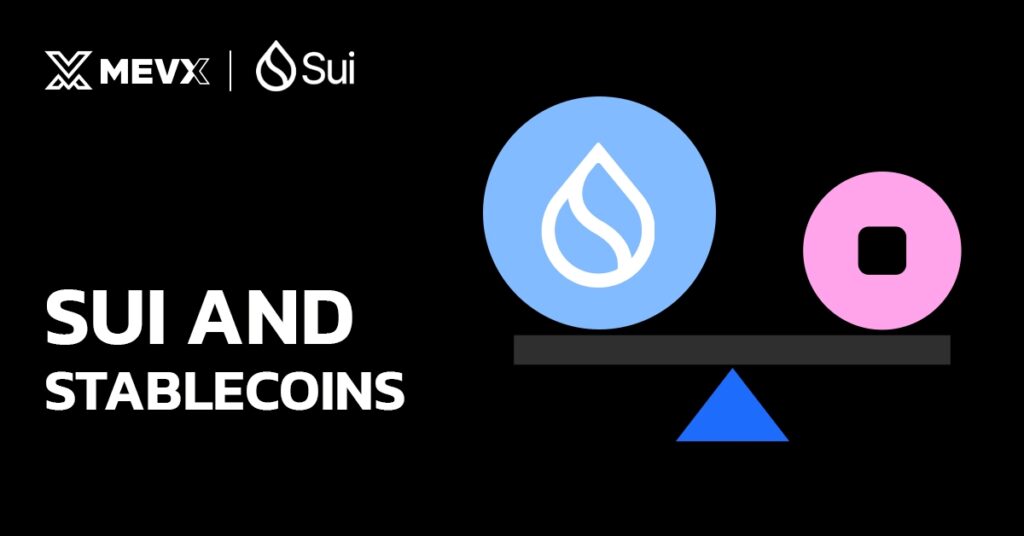In 2025, the role of stablecoins has grown well beyond simple value storage. They now power lending markets, liquidity pools, and everyday transactions across chains. On the Sui blockchain—a fast, object-based Layer 1—the stablecoin ecosystem is starting to find its footing, thanks to rising support for assets like AUSD, FDUSD, and USDY.

They’re not merely another group of dollar-pegged tokens. They each have fairly unique jobs to do that collectively can assist in fleshing out the decentralized finance (DeFi) ecosystem on Sui. Collectively, they give DeFi the liquidity, composability, and real-world anchoring that its success requires.
Why Stablecoins Matter on Sui
Sui and stablecoins go together like hand in glove. Sui can scale as well as scale rapidly, but its design perceives assets as programmable objects. Such designs bring brand-new use cases, but they also rely on liquidity to readily migrate from programs back into applications.
Stablecoins are the linchpin of that equation. They provide us with:
- Price stability: There is no fluctuation for consumers who are interested in DeFi products.
- Interoperability: Stablecoins help bridge liquidity from other chains into Sui.
- Composability: All DeFi applications, from DEXs to money market applications, use stable pairs for yields and for swaps.
Let us examine what is unique about AUSD, FDUSD, and USDY in Sui’s growing DeFi story.
AUSD: Native Liquidity for the Sui Ecosystem
AUSD is a native stablecoin designed specifically for the Sui blockchain. It’s issued directly on Sui, not bridged from Ethereum or elsewhere, which gives it a few distinct advantages:
- Low gas fees and fast settlement
- Composability across Sui-native apps
- Trustless minting and redemption, depending on its implementation model
While still early in its adoption, AUSD is emerging as the go-to stablecoin for core DeFi activity on Sui, especially as protocols start to favor native assets over bridged ones for speed and security.
Expect AUSD to anchor lending platforms, stable LP pairs, and payment apps over time.
FDUSD: A Bridge Between TradFi and DeFi
FDUSD (First Digital USD) is a fully reserved stablecoin issued by First Digital Group in Hong Kong. Backed 1:1 by cash and cash equivalents, FDUSD has seen wide adoption on centralized exchanges like Binance.
Its presence on Sui marks a bridge between traditional financial infrastructure and decentralized applications.
Key points:
- Regulatory-friendly design: Backed by real reserves and subject to transparency audits.
- Cross-chain presence: Helps bring external liquidity into Sui-based DeFi.
- Ideal for institutional-grade apps or consumer-facing tools that require a compliant asset.
If you’re building a DeFi app with fiat ramps, FDUSD might be the best match.
USDY: Yield-Bearing Stability
USDY is issued by Ondo Finance and stands out from most stablecoins for one key reason: it earns passive yield. USDY is backed by short-term U.S. Treasury Bills, making it a tokenized version of an interest-bearing dollar.
Why it matters:
- Built-in yield without the need for staking or complex DeFi strategies
- Trusted backing from real-world financial instruments
- Attractive to conservative users or DAOs managing treasuries
On Sui, USDY opens up options for more capital-efficient protocols. For example, it can serve as high-yield collateral in lending markets or act as a “safe” pool in yield aggregators.
Using Stablecoins in Move and Sui Apps
Thanks to Sui’s object-centric design and the Move programming language, integrating stablecoins into apps is straightforward. Developers can treat USDC, USDY, or other supported stablecoins just like any other coin object.

Using the Sui Coin standard, you can:
- Accept stablecoins in custom smart contracts
- Build swap routers that mix native and bridged tokens
- Use coin types in permissioned finance apps or mobile games
This composability also makes it easy to plug stablecoins into Sui’s DeFi infrastructure—whether it’s DEXs like Turbos or lending protocols like Navi.
Where the Stablecoin Market Is Headed on Sui
The stablecoin race on Sui is still early, but 2025 is shaping up to be a turning point. Here’s what to expect:
- More DeFi protocols will favor native tokens like AUSD to avoid bridge risk and reduce latency.
- Yield-bearing stablecoins like USDY will become standard collateral, especially for conservative DeFi.
- Fiat-on ramps and regulated players will increasingly choose assets like FDUSD to meet compliance needs.
As these assets grow in volume and integrations, they’ll push Sui’s DeFi ecosystem toward deeper liquidity and more sophisticated applications.
Final Thoughts
Sui doesn’t need dozens of stablecoins to succeed—just a few solid ones that serve different roles well. AUSD for native liquidity. FDUSD for regulatory crossover. USDY for yield-bearing use cases.
Together, they give users and builders the tools to interact with money in a way that’s programmable, composable, and efficient, without sacrificing stability. And in a space that moves as fast as crypto, that kind of foundation matters.
Whether you’re building the next lending protocol or just looking to park stable value on a scalable chain, Sui’s stablecoin stack in 2025 is ready.
Share on Social Media:
